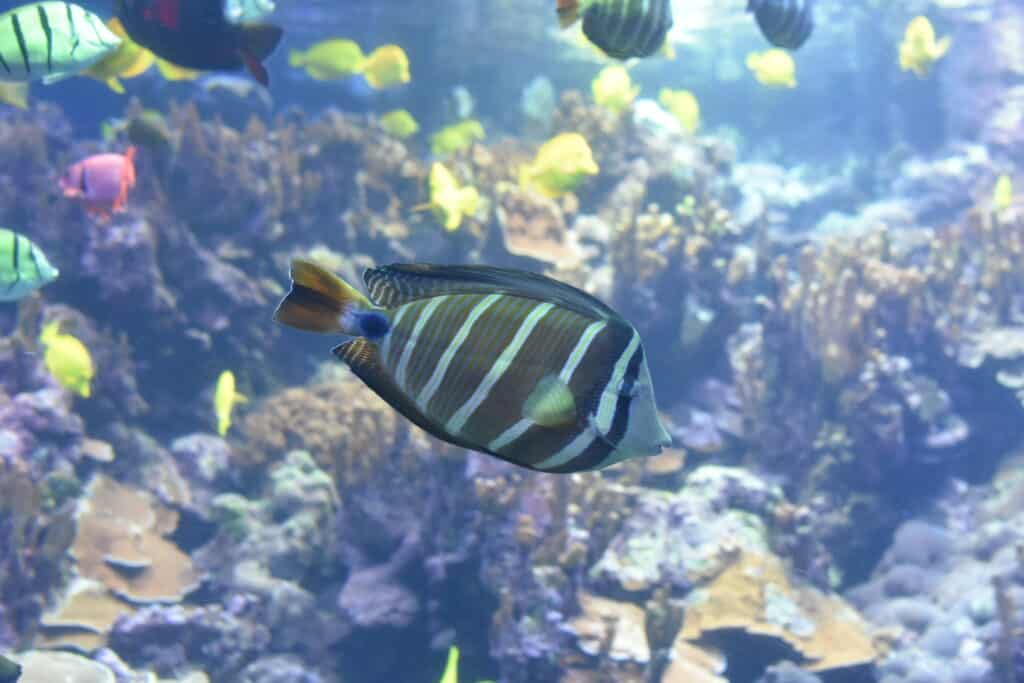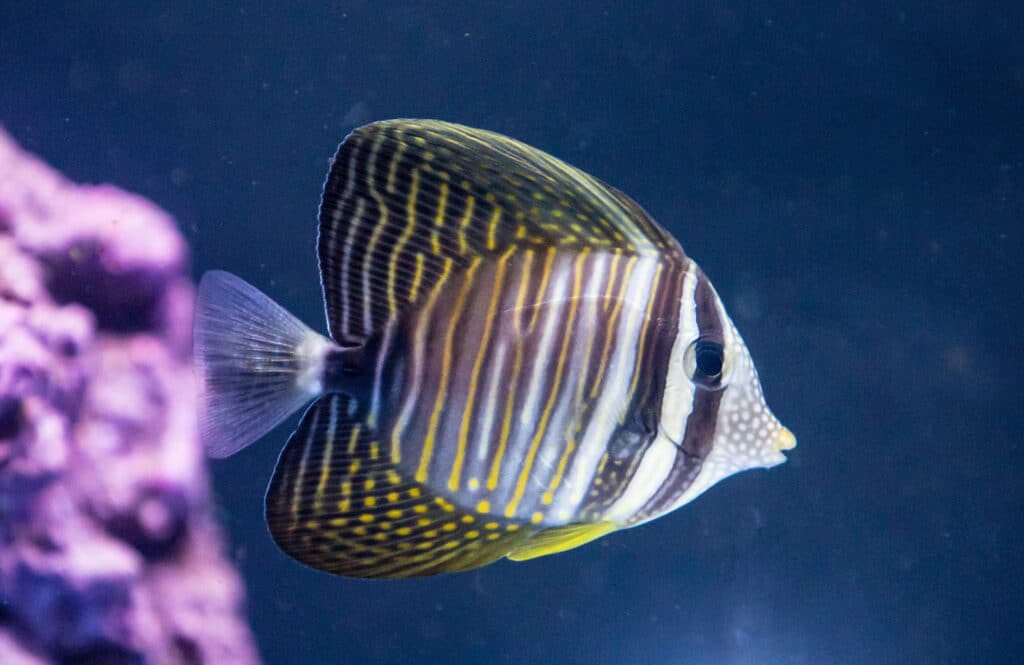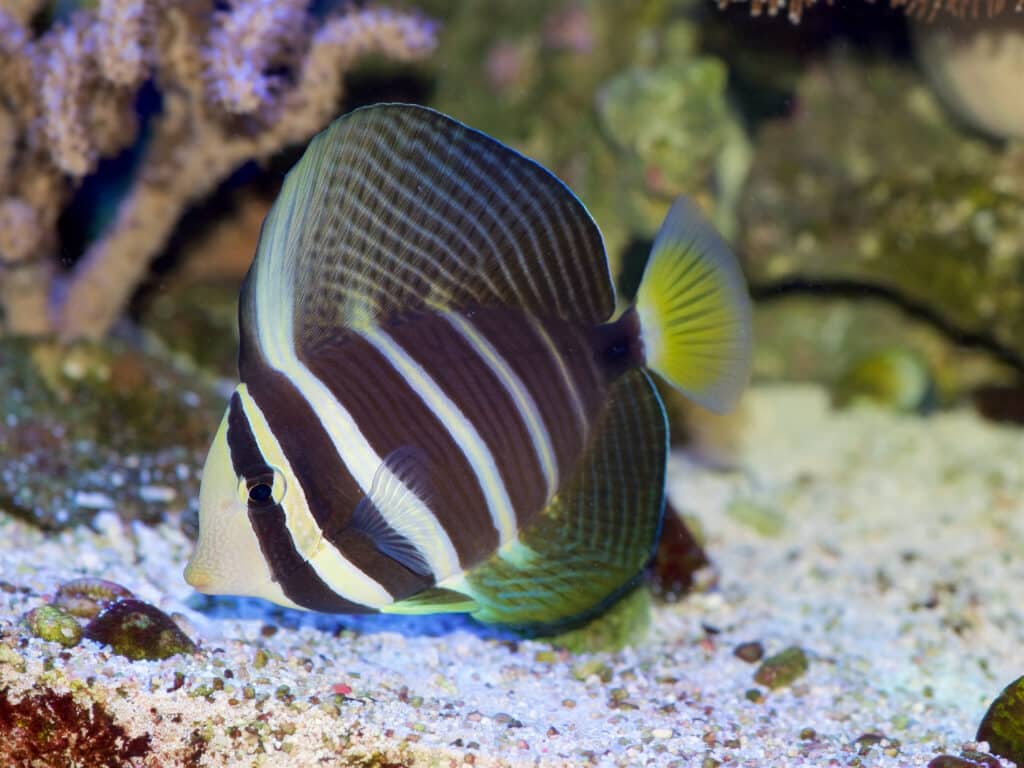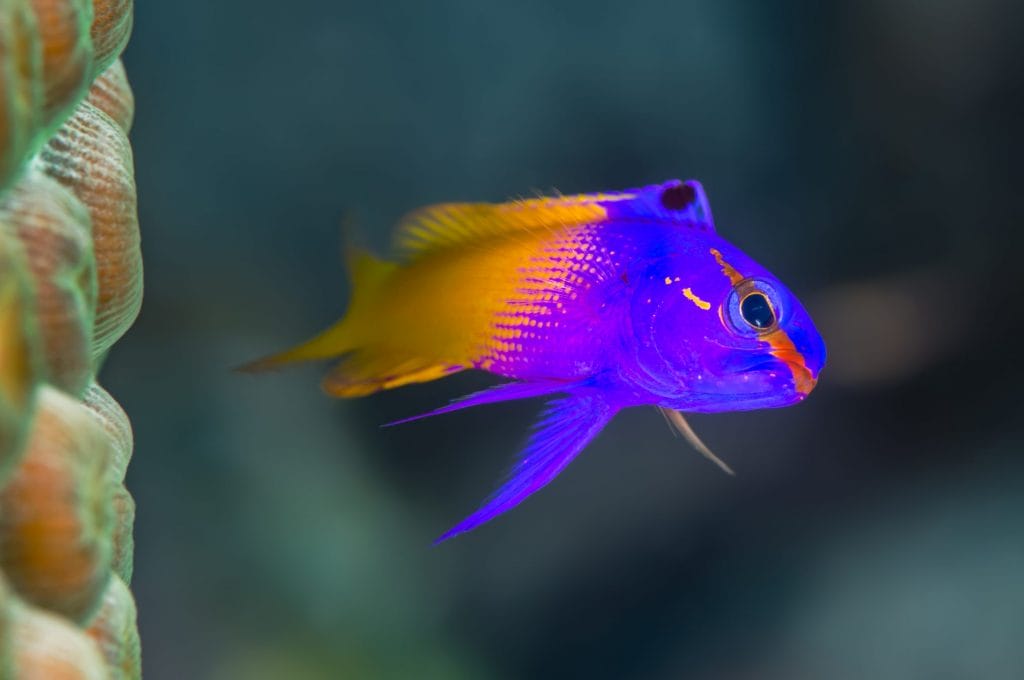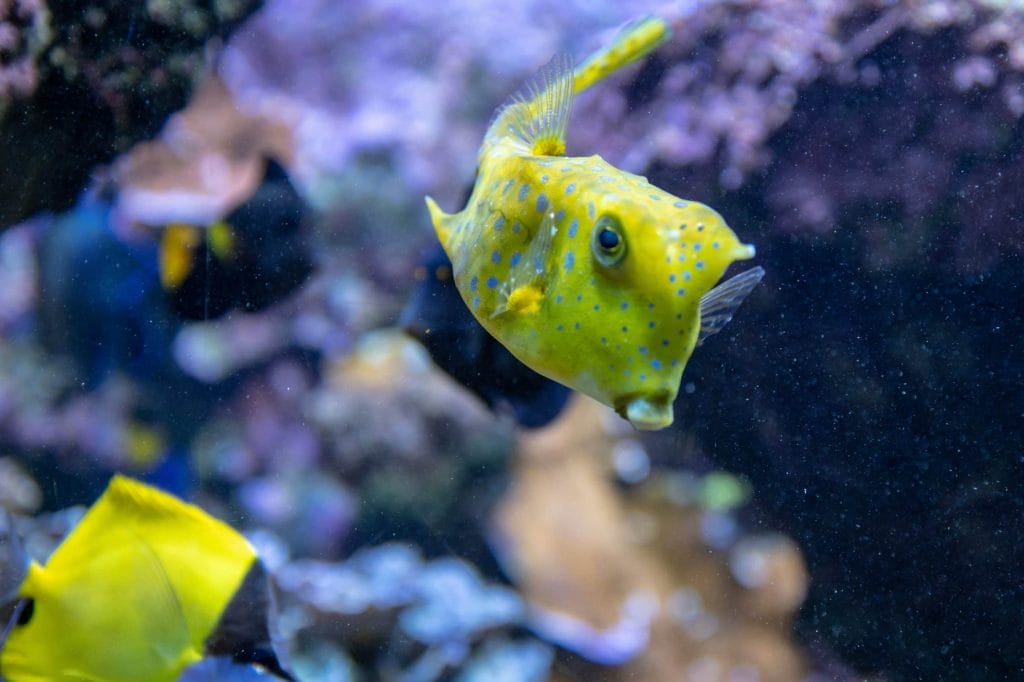Unique Characteristics:
The Reef’s Fabulous Algae-Eating Showstopper
The Sailfin Tang is basically the ocean’s version of someone who refuses to go unnoticed. With dorsal and anal fins that expand like giant sails, it can instantly transform from a sleek swimmer into a dramatic, oversized pancake with stripes. Those bold vertical lines and vibrant yellow and brown accents don’t just look good—they help it blend into coral shadows when it feels shy (which, let’s be honest, isn’t often). When it fans out its fins, though, it becomes the undeniable superstar of the reef, as if saying, “Yes, I am this fabulous.”
Personality-wise, the Sailfin Tang is the perfect mix of busybody and eco-friendly roommate. It spends most of its day zipping around like it’s late for something important, all while nibbling algae with surprising dedication. This makes it both entertaining to watch and incredibly helpful for keeping tanks clean. Smart, observant, and quick to learn feeding routines, a Sailfin Tang often recognizes its keeper faster than some people recognize their neighbors. With its mix of flair, charm, and usefulness, this fish is a delightful blend of show-off and hard worker—truly one of the reef’s most lovable characters.
